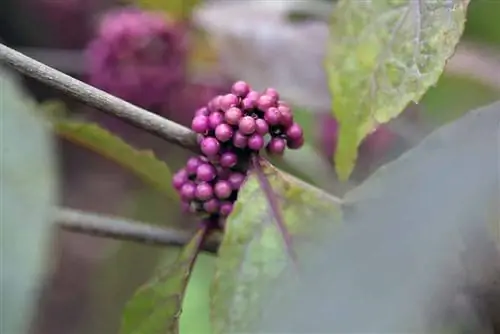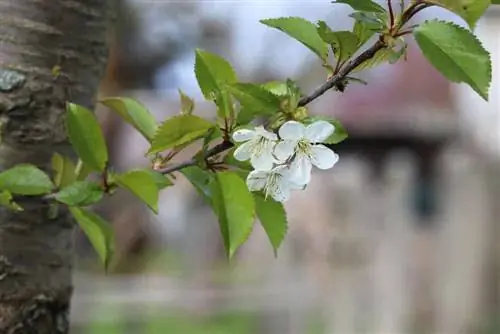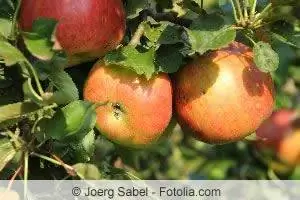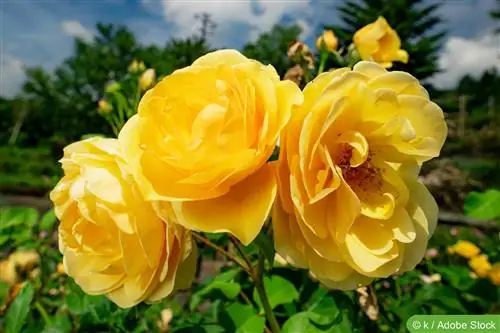- Author admin [email protected].
- Public 2023-12-17 03:39.
- Last modified 2025-01-24 12:45.
The beautiful fruit belongs to the mint family and is originally native to central and western China. The plant is also called the love pearl bush because of its purple fruits and is available in different varieties from specialist retailers. The deciduous shrub is somewhat sensitive to cold during its first few years of life and therefore needs additional protection in order to survive the local winter months unscathed. Due to its extensive growth height and width of several meters, the beautiful fruit is suitable for the garden as a hedge plant with good privacy protection.
Location & plant substrate
The location for the beautiful fruit should be predominantly sunny; the less sunlight there is, the sparser the fruit production. The love pearl bush does better in sheltered places, as a little moisture can accumulate here, which guarantees consistently good growth. Extremely calcareous and clayey soils should be avoided when planting. The looser the planting substrate, the better the root growth. The following aspects must be taken into account when it comes to the location and plant substrate:
- Full sun to partially shaded locations are ideal
- Not particularly demanding when choosing a location
- As a solitary plant in exposed locations or in group planting as a hedge
- Prefers wind-protected locations with consistently high humidity
- Winter wind that is too cold causes shoots to freeze severely
- Needs permeable and humus-rich soil
- Low-lime soil, with a slightly acidic to neutral pH value
- Avoid waterlogging at all costs
- Loosen compacted soil with sand
- Enrich nutrient-poor plant substrate with humus
- Pot storage possible for large balconies and terraces
Tip:
Less suitable locations are places where the sidewalks lead directly past. If the berries fall off and are crushed, there is additional work involved in cleaning up the unsightly residue.
Plants & Plant Neighbors
If the beautiful fruit is purchased as a plant that has already grown, it can be planted almost all year round, with the exception of winter. Young plants are very sensitive to cold and initially need warm outside temperatures and well-tempered soil. The bush produces a particularly large number of flowers and fruits when several bushes are planted at the same time, which can pollinate each other:
- The best time to plant is late spring
- Older specimens can also be planted in autumn
- Dig a planting hole twice as large as the root ball
- Loosen the soil sufficiently, install mulch as root protection
- Create drainage for good permeability
- Distance to other plants at least 80 cm
- Water abundantly after planting
- Optimal plant neighbors are shrubs with similar autumn colors, e.g. hazelnut
Watering & Fertilizing

The beautiful fruit does not have any special requirements when it comes to watering and fertilizing and develops into self-sufficient as it gets older. Additional watering should only be carried out during prolonged dry periods. However, young plants rely on regular watering and fertilizer until they reach their second year of life. The following criteria are important when watering and fertilizing:
- Never let the soil dry out completely
- Water additionally if there is no rain for a long time
- Collected rainwater is ideal
- Alternatively use stale and low-lime tap water
- Mulch layer keeps moisture in the soil
- Fertilize only in the first years of life and in extremely nutrient-poor soils
- Work a little humus into the soil in spring
Leaves, fruits & growth
The beautiful fruit is also called the love pearl bush because of its colorful fruits. Since the shrub can grow to considerable heights and widths, it is ideal as a hedge plant. If the beautiful fruit only has its leaves, the bush is rather unsightly, but this changes as the eye-catching fruits develop. Flowering begins at the beginning of summer, then the beautiful fruit develops into a magnet for bees and other insects. Leaf shoots begin in spring:
- Matte green foliage, serrated leaves with a length of approx. 10 cm
- Attractive autumn color, leaves turn yellow, orange or red depending on the variety
- Flowering period June to July, pink or pink-white flower colors
- Bears purple fruits, with small and round shape
- Fruits grow in manageable clusters on the branches
- Fruit formation in autumn, remain on the branches until winter
- Reaches heights of up to 3 m, diameter up to around 2 m
- Provides privacy protection from the street and neighboring property as a hedge plant
- Branches can be cut off along with the fruits and used as vase decorations
Tip:
The fruits of the beautiful fruit are slightly poisonous, so small children should not play near the bush unsupervised. Because of the colorful design of the fruits, children are attracted to them and often put them in their mouths.
Varieties
There are around 140 related varieties worldwide, the following are among the popular and easily available in specialist shops:
- Chinese beautiful fruit (Profusion): height 3 m, width 2 m, frost hardy from the 2nd year, bears purple or pink fruits
- American beautiful fruit (Callicarpa americana): Native to North America, 180-240 cm high, purple fruits are edible
- Japanese love pearl bush (Callicarpa bodinieri Leucocarpa): White flowers with stem, also white drupes, up to 2 m high and wide
- Love pearl bush (Callicarpa bodineri): Upright growing shoots, purple-pink flowers, height 2-3 m, frost hardy from the 2nd year
Cutting
As a rule, a slight pruning immediately after flowering is sufficient; after a more severe cut, significantly fewer fruits are formed. It is also important to pay attention to which branches are cut off so that the colorful fruits develop on the right branches in autumn. The following procedure should be observed when cutting:
- Regularly remove dead shoots and branches that are too long
- Subtle pruning after flowering
- Normally growing shrubs do not need pruning
- Mark fruit-bearing branches so as not to prune them
- Fruits only form on two-year-old wood
Tip:
If older bushes start to bloom less profusely, then a radical pruning is called for; this rejuvenation cut is necessary approximately every 3-5 years. In the following autumn the fruit production is reduced, but then the beautiful fruit sprouts again splendidly.
Wintering
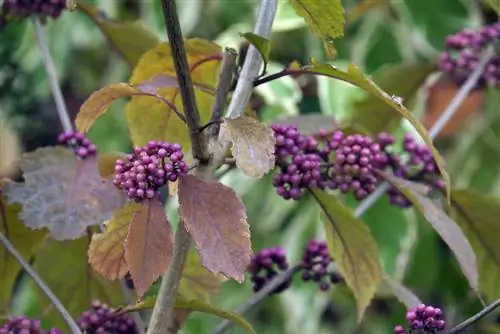
Not all beautiful fruit varieties are winter hardy, so some are only suitable for keeping in containers and have to spend the cold season in winter quarters. These frost-sensitive properties should be researched before purchasing. The following aspects should be taken into account when wintering:
- In colder regions, pay attention to the variety's good frost hardiness
- Older specimens cope well with freezing temperatures
- Young plants need additional winter protection
- Fleece and jute bags to consider are ideal
- As an alternative, place pine branches at an angle and tie them up
Propagate
Propagation is possible both by sowing and by cuttings. Propagating cuttings is relatively easy and almost always results in success:
- Cut off long and strong shoots in autumn
- Select shoots without fruit covering
- Put into the soil, water well and always keep moist
Diseases & Pests
Robust shrub that is not susceptible to disease or pests.
Conclusion
The beautiful fruit and its various varieties are relatively easy-care and robust shrubs that beautify the garden with colorful flowers and fruits. As the plant ages, it becomes more self-sufficient and does not need to be watered or fertilized regularly. Given its expansive height and width, the beautiful fruit is well suited both as a solitary plant and for hedge planting. Winter hardiness depends on the variety; the frost-hardy varieties are particularly suitable for the local latitudes. Young shrubs need additional winter protection in order to survive frost without damage. Caution is advised when small children play in the garden, as the berries are slightly poisonous. Pruning is only necessary to a limited extent and propagation can be carried out quickly using cuttings. Due to its resilient properties, the beautiful fruit is not particularly susceptible to diseases or pests.

